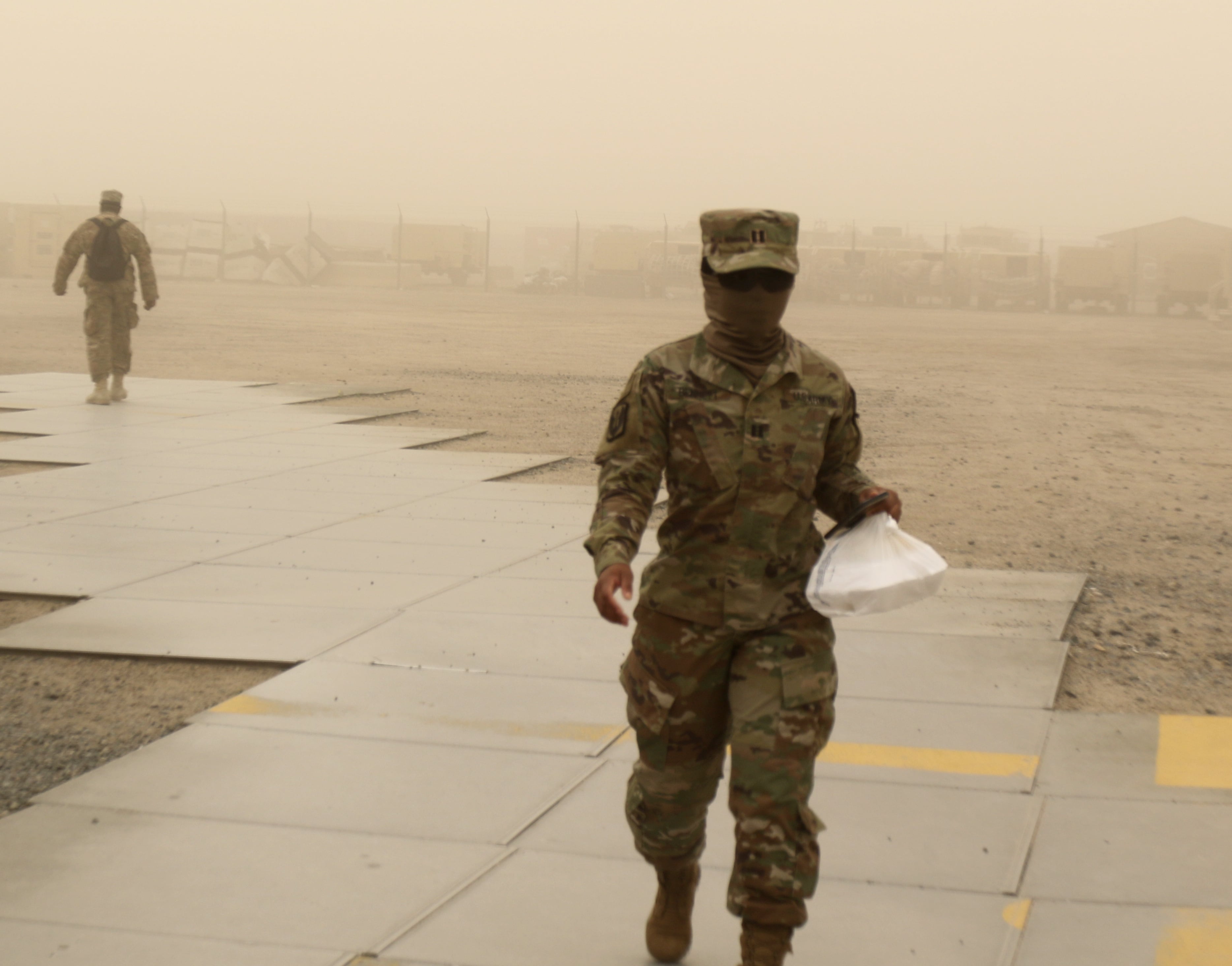The best easy-to-find material for a homemade face covering to protect against coronavirus transmission is four-ply microfiber cloth, according to Army researchers at the service’s Combat Capabilities Development Command.
Researchers with the command’s Chemical Biological Center said in a Wednesday news release that the four-ply microfiber cloth, which can be found in the cleaning section of most big box stores, filters out more than 75 percent of particles.
An N-95 mask, the protective covering in short supply among hospital workers who need it most, is able to filter out 90 percent of particles, they said.
Layering a polyester bandanna can filter out about 40 percent of suspended particles, the release added. Officials from the command did not immediately respond to a request for comment asking how well the neck gaiters perform, which are commonly worn by soldiers.
The team made the determinations after testing more than 50 materials — with more tests ongoing — by spraying a salt aerosol at a piece of the chosen material.
The salt particles used to test the filter were 0.2-0.3 microns in size. Coronavirus is roughly 0.1 microns in size, but the virus floats around in droplets expelled by infected persons that are anywhere from 0.2 to a several microns in size or larger.
To test how well a material filters the particles, the Army researchers measured the density of particles suspended in the air on one side and compared it to the density on the other, according to the release.
The tests were prompted when the Defense Department and other federal agencies contacted the Chemical Biological Center and asked them to use their laboratories to test materials to help with the national shortage of masks and other protective equipment.
“The challenge is to pick a material that effectively blocks the virus particles from going through the material while not being too hard to breathe through,” said David Caretti, chief of the Chemical Biological Center’s protection and decontamination division, in the release. “If the resistance is too high, airflow will simply bypass the covering and go around the edges.”
In early April, the defense secretary issued a memo instructing all service members to wear face coverings while in public and where maintaining six feet of separation was not realistically possible.
The memo instructed troops to make their own ad-hoc face coverings in lieu of being issued ones. Service members have also been using neck gaiters that they have been issued in the past.
The face mask requirement included all military personnel, DoD civilians, dependents, contractors and other personnel who find themselves on military installations.
The Army has warned soldiers not to fashion face coverings from their Army Combat Uniforms or similar materials, because those have been chemically-treated. All the services said that actual N95 respirators or surgical masks must be reserved for use by those in medical settings.
Kyle Rempfer was an editor and reporter who has covered combat operations, criminal cases, foreign military assistance and training accidents. Before entering journalism, Kyle served in U.S. Air Force Special Tactics and deployed in 2014 to Paktika Province, Afghanistan, and Baghdad, Iraq.
